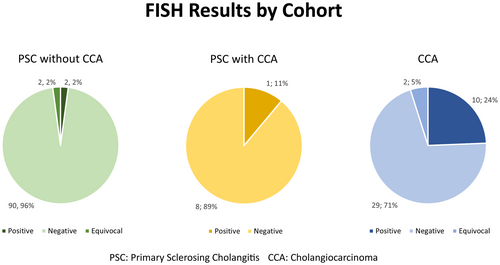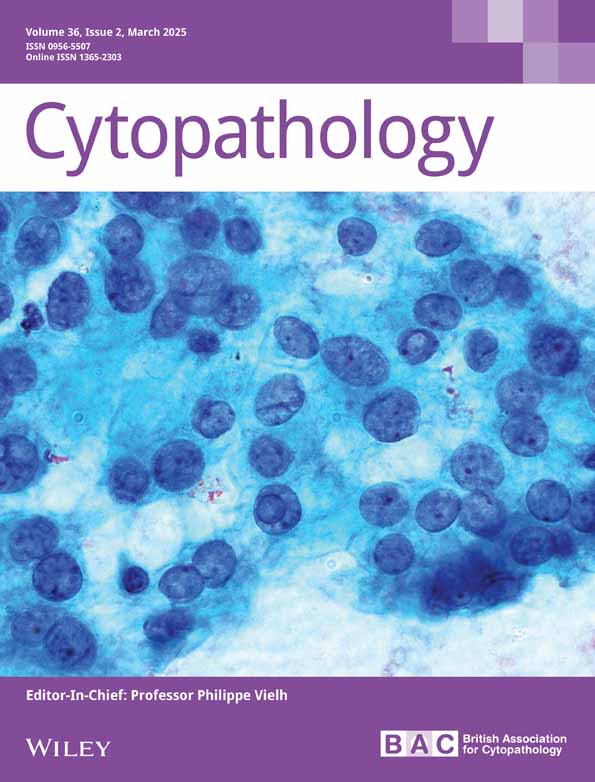Detecting Cholangiocarcinoma in the Setting of Primary Sclerosing Cholangitis: Is Biliary Tract Fluorescence In Situ Hybridization Helpful?
Funding: The authors received no specific funding for this work.
ABSTRACT
Introduction/Objective
Biliary brushing cytology (BB) to detect cholangiocarcinoma (CCA) is integral in the surveillance of patients with primary sclerosing cholangitis (PSC). Since reactive changes can mimic carcinoma, indeterminant results are frequent. Fluorescence in situ hybridization (FISH) using the UroVysion probe set has been advocated to enhance the detection of CCA. This study evaluates the performance of FISH for detecting CCA in patients with and without PSC.
Materials and Methods
A query of our pathology database for atypical and suspicious BB with concurrent FISH results was performed from 2014 to 2021. FISH (using UroVysion probe set containing centromere enumeration probes to chromosomes 3, 7, and 17) was positive if at least 5 cells demonstrated polysomy. Electronic medical records were reviewed to identify patients with PSC and CCA. CCA was confirmed by pathology or clinical impression.
Results
Of the 65 patients (103 BB) in the PSC cohort, 59 patients (94 BB) without CCA and 6 patients (9 BB) with CCA were identified. 33 non-PSC patients (41 BB) with CCA were included for comparison. Positive FISH was highest in non-PSC patients with CCA (10/41 BB, 24%). Positive FISH was seen in both PSC with (1/9 BB, 11%) and without (2/94 BB, 2%) CCA.
Conclusions
FISH positivity was lower than expected and was positive in PSC patients without CCA. These results question the clinical utility of FISH for CCA surveillance in PSC patients.
Graphical Abstract
Biliary brushing cytology to detect cholangiocarcinoma is integral in the surveillance of patients with primary sclerosing cholangitis but has low sensitivity. FISH has been advocated to improve detection. This study showed low FISH positivity, which was also seen in the absence of cholangiocarcinoma.
Conflicts of Interest
The authors declare no conflicts of interest.
Open Research
Data Availability Statement
The data that support the findings of this study are available from the corresponding author upon reasonable request.





